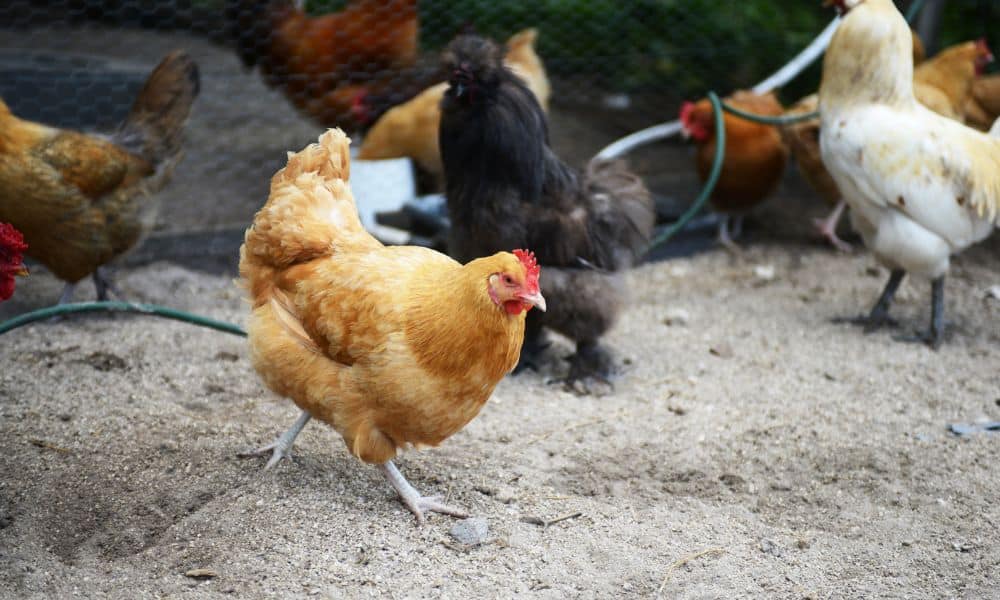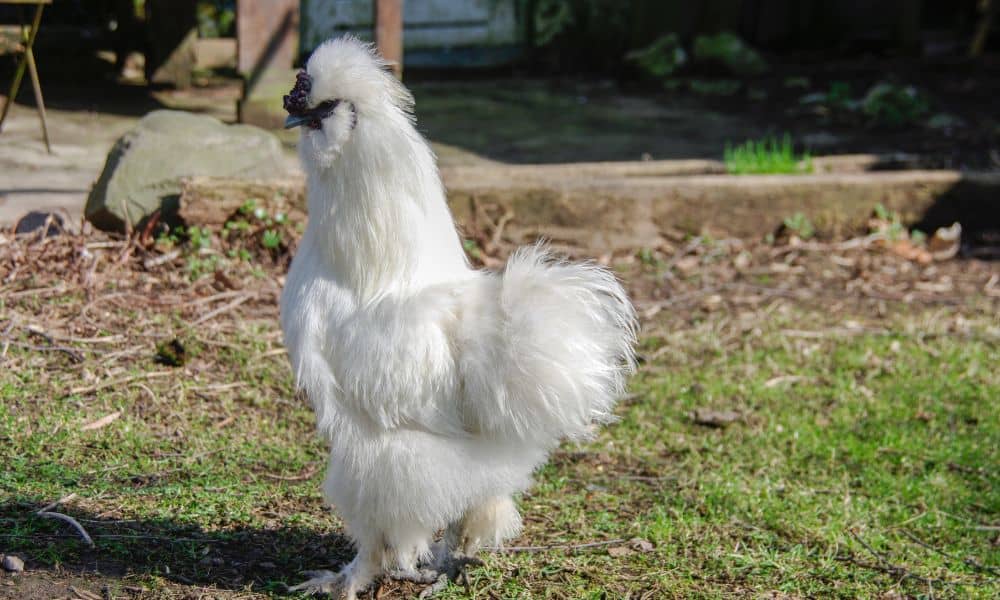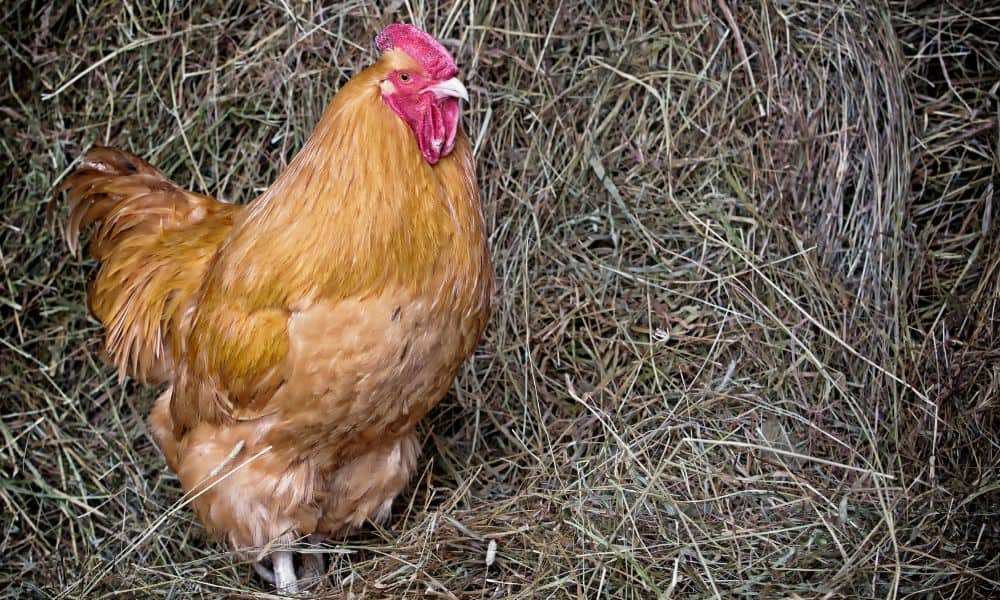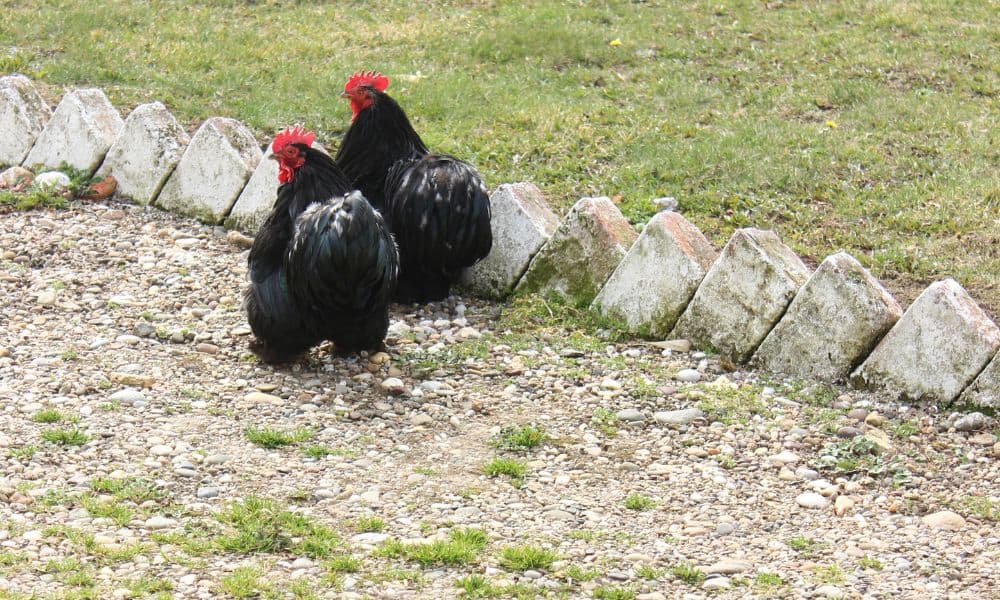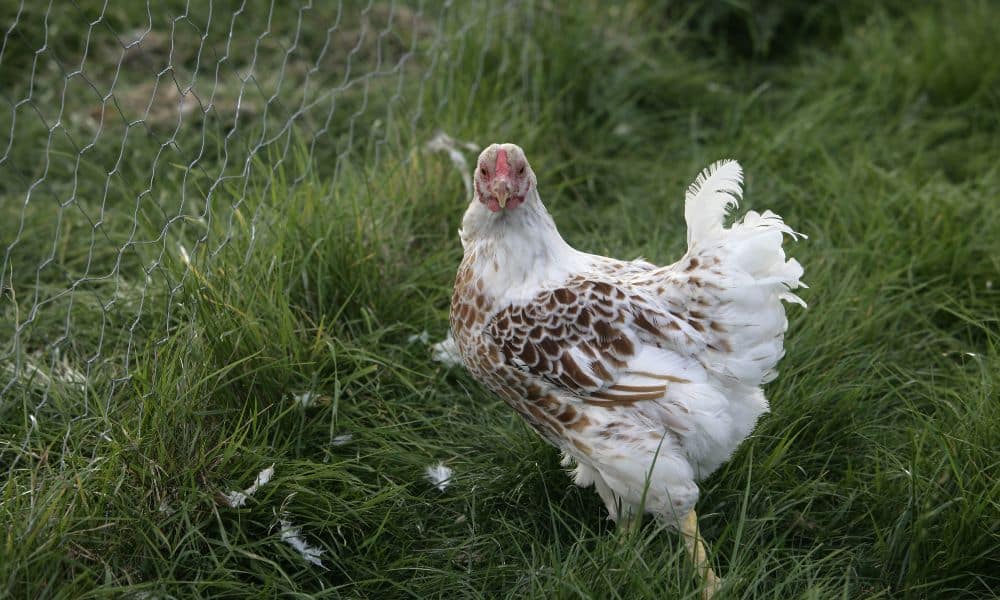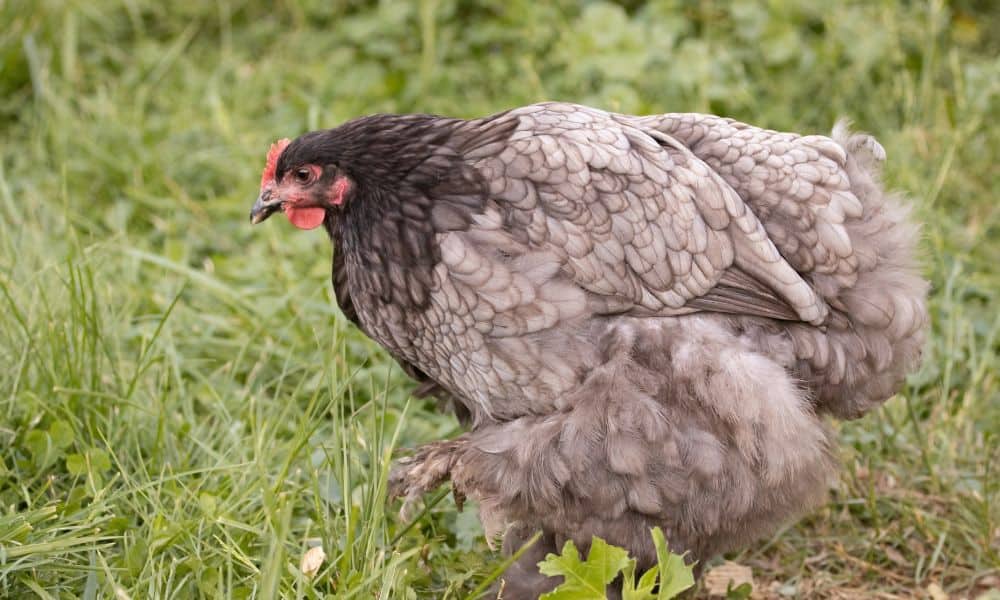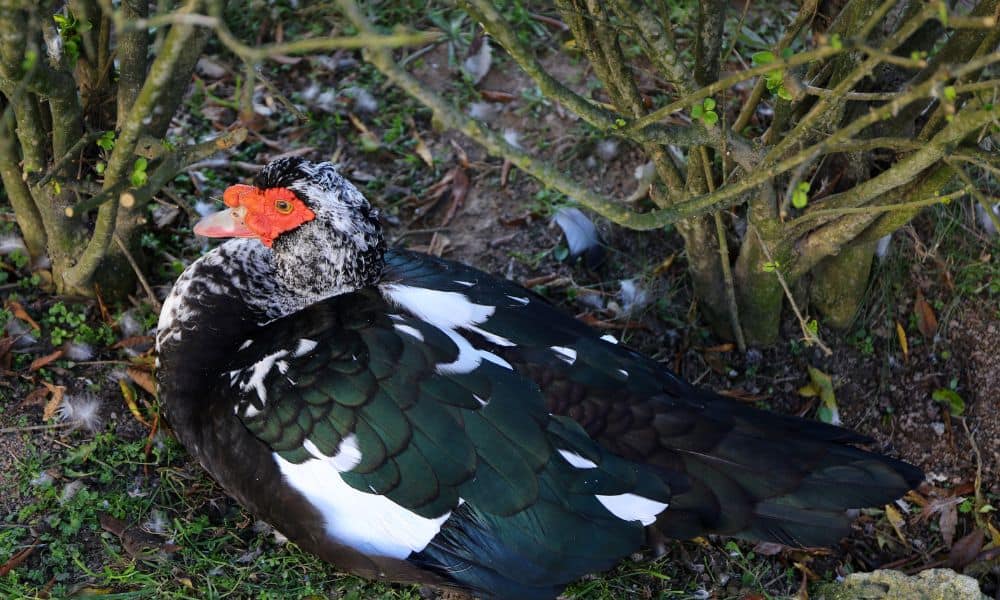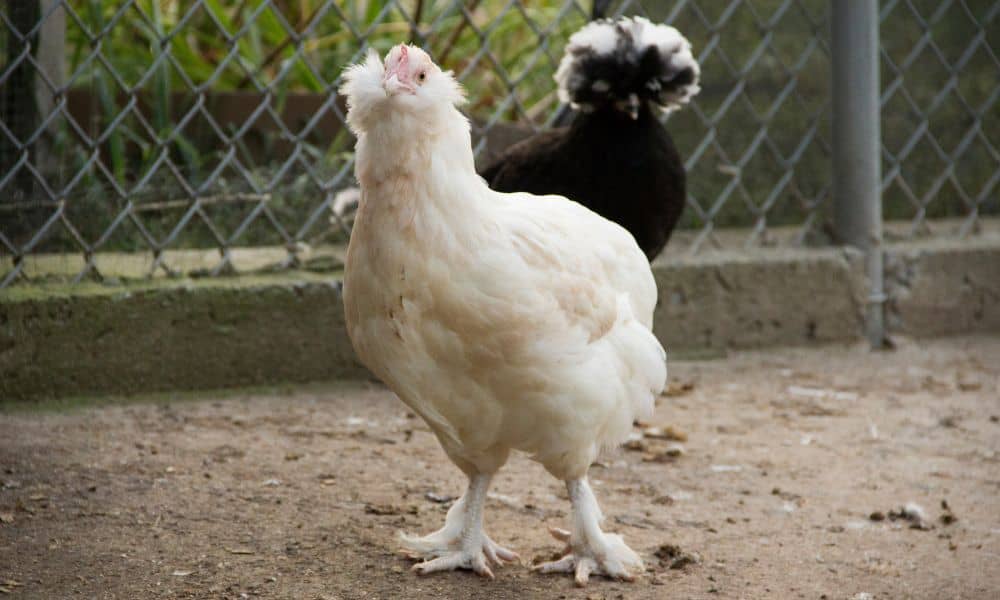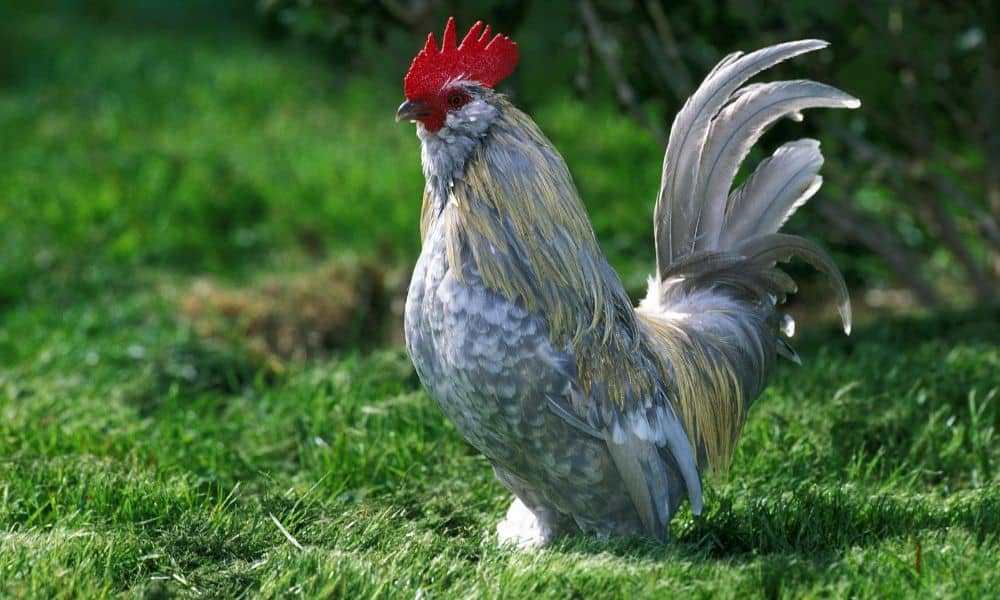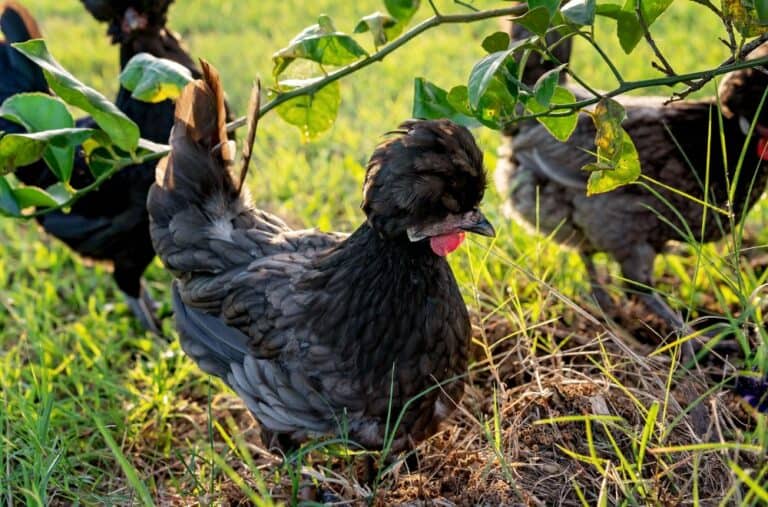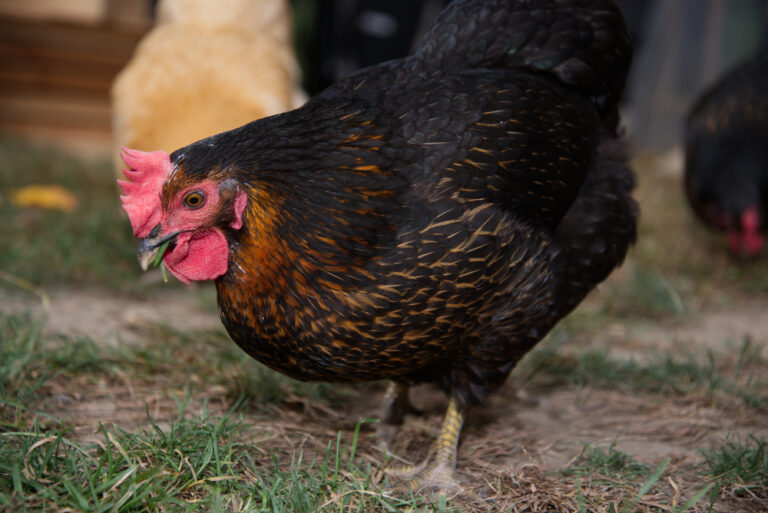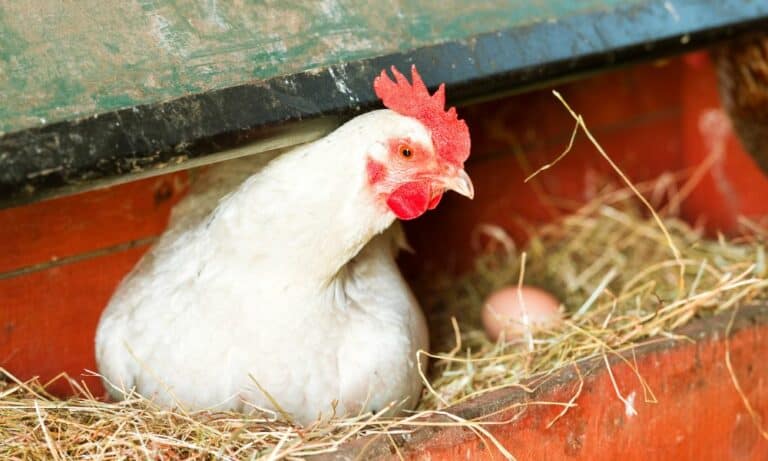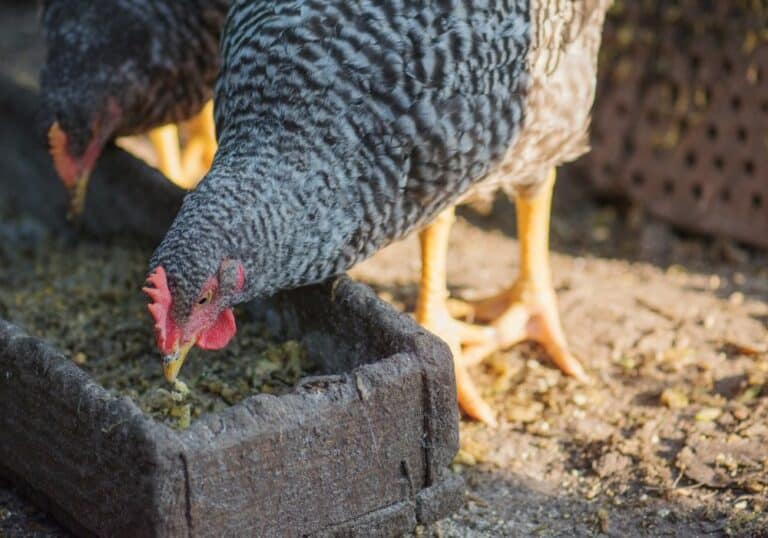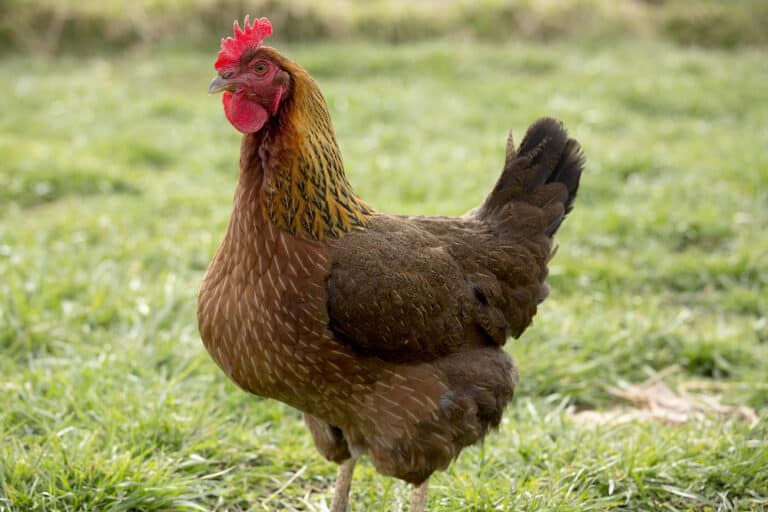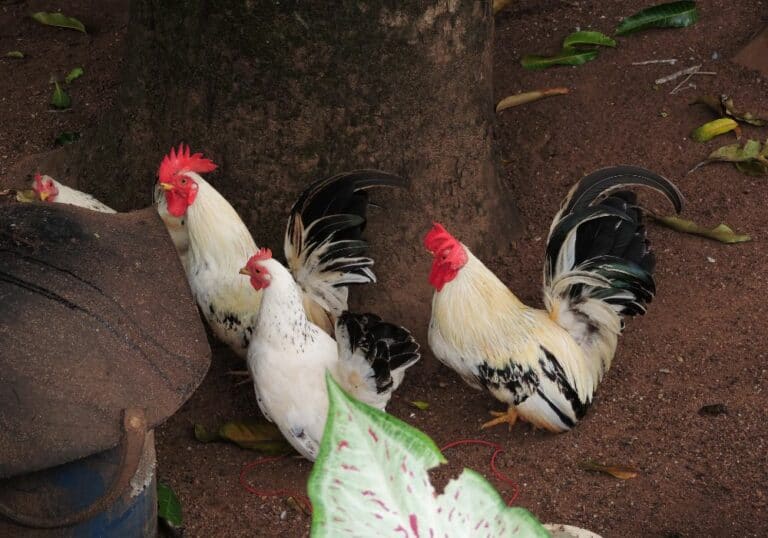Looking for a chicken that’s happy to interact with people? We’ve got you covered!
We’re going to look at some of the friendliest chicken breeds out there. We’ll look at their origins and characteristics. And we’ll look at the hens’ egg-laying capabilities too.
Ready to find a new feathered friend? Step this way!
What makes a chicken friendly?
Breed certainly plays a part in a chicken’s disposition. But just like humans, each chook has its own personality. Several other factors can make a chicken more likely to enjoy human company.
Being hand-reared
Chickens that have been used to people from a young age will be more comfortable in their presence. If you’re breeding chicks, handling them regularly (and gently) will ensure they’re relaxed with people.
Avoid stressing them – move slowly and talk quietly to them. Hand feeding them will help you build a bond. And be there to provide reassurance when they’re introduced to new surroundings. They’ll learn to see you as a source of comfort and protection.
Coming from a breeder with a reputation for friendly chickens
Just like other characteristics, friendliness can run in the family! Breeders known for the friendliness of their chooks may have chickens with genes that make them congenial.
But those breeders are also likely to be rearing their chicks in a way that helps them bond with humans. As we’ve already seen, those early interactions play an important part in determining their relationship with people later in life.
Color varieties
Even within the same breed, there can be a lot of variation in the temperaments of birds of different colors. That often links to selective breeding over the generations.
The Leghorn, a British breed of chicken, is a good example of this. White Leghorns have been bred with a focus on egg production. And, as with many breeds that are prolific layers, they tend to be flighty and easily spooked.
Silver Leghorns, on the other hand, come from a wider gene pool. They’ll still produce a decent number of eggs, but they tend to be calmer birds.
Top 10 Friendliest Chicken Breeds
1. Silkie
The beautiful Silkie is well known as amongst the friendliest of all chicken breeds. And it’s a very striking looking bird into the bargain.
Its name reflects its beautiful fluffy feathers, which have been likened to both silk and fur. Those feathers have a different structure to those of most birds. So although they’re small – most North American Silkies are bantams – they can’t fly.
They also have black or blue-black skin and bones, and five toes on each foot – one more than most chicken breeds. Some Silkies have what are known as beards – ruffles of feathers under their beaks. And all of them have dark wattles, turquoise earlobes, and combs shaped like walnuts.
They will happily interact with humans. They’re calm and friendly, and most chooks are content to be held on laps and gently cuddled.
Silkie hens aren’t the most prolific egg layers, but you can still get around 100 eggs from each hen over a year. They often go broody too, and they make excellent mothers. They’ll even sit on eggs laid by less maternal breeds.
2. Dutch Owlbeard
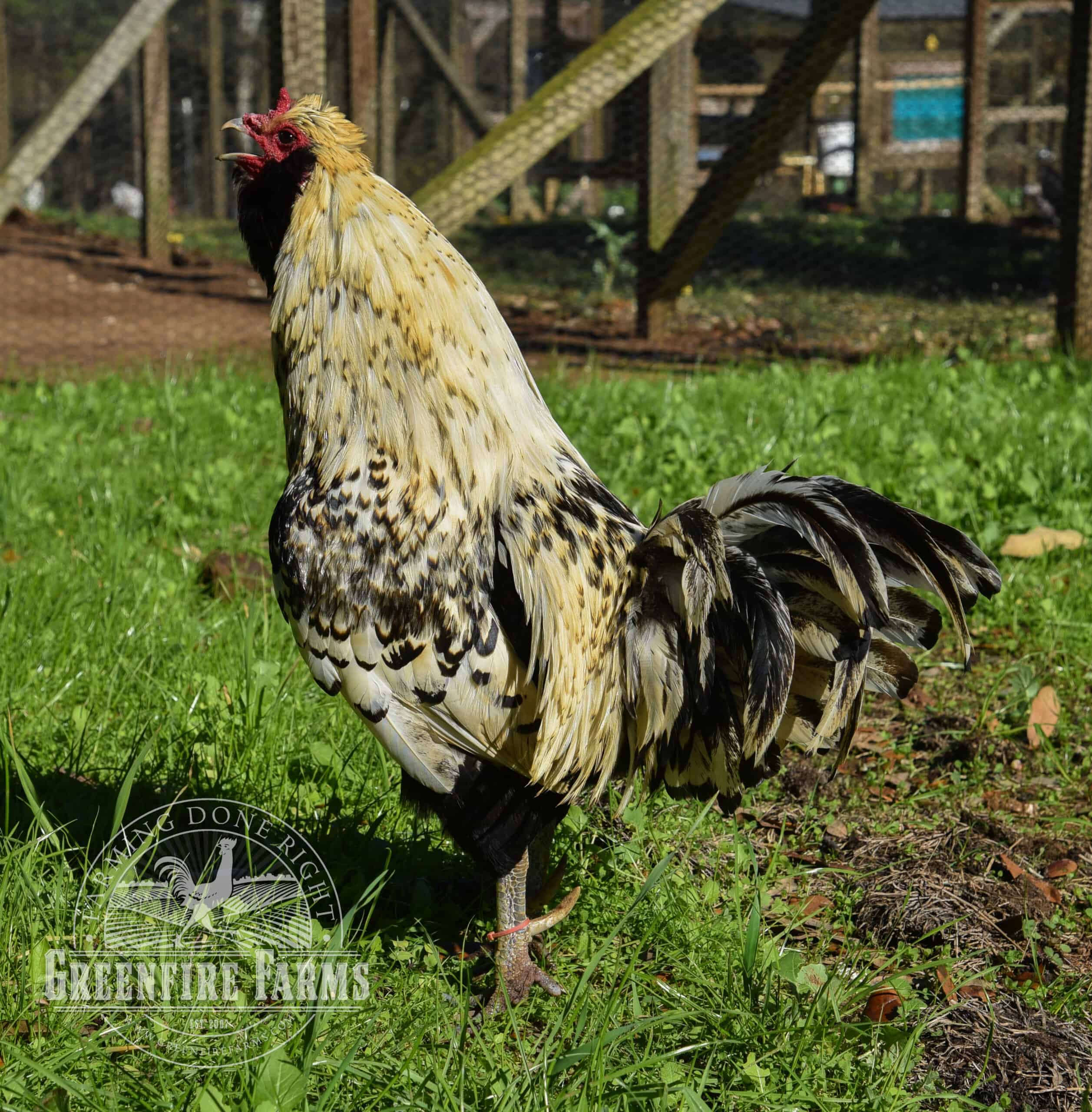
Many chicken breeds originated in the Netherlands, and the Dutch Owlbeard is one of the oldest. It has a history that dates back to at least the seventeenth century.
They get their name from the ruffles of feathers around their neck, which give them an owl-like appearance. Even the chicks emerge from their shells with furry collars!
They’re attractive birds, with a proud stance. They can be found in a range of different color varieties, both solid colors and spangles. They have horn-shaped combs, and in the roosters the horns stand vertically. And they don’t have any wattles.
They’re independent and like to roam. But they’re also calm and friendly birds. Give them plenty of love and care, and they’ll become tame enough to happily take feed from your hand.
And if you’re looking for lots of eggs, this breed could be a good choice. The hens will lay around 200 per year. And because they don’t often go broody, the rate of production stays fairly consistent. They’ll even continue laying through the winter months.
3. Orpington
The beautiful Orpington is one of the friendliest chooks around. It was originally bred for both eggs and the table, but is now exclusively a show bird. You can find Orpingtons in a range of different colors, including buff, lavender, lemon cuckoo, blue and chocolate.
All color varieties are happy to interact with humans. They enjoy cuddles and affection, and make great pets for children.
There are standard and bantam varieties, and both are equally congenial. Standard males weigh between 8 and 10 pounds, while hens are between 6 and 8 pounds. Bantams are around 3 to 3.5 pounds.
The hens are good layers, producing anything from 150 to 250 medium-sized eggs per year. Buff Opringtons are known to be particularly prolific.
They’re not particularly active, though. That means it’s important to monitor their feed, as they’re prone to gaining weight.
4. Australorp
The Australorp is a large chicken that hails from Australia. It was bred from chooks including Orpingtons, and it’s inherited the same calm, friendly and affectionate nature.
American poultry clubs only recognize black Australorps, but white and blue varieties are also recognized Down Under. And in South Africa, buff, wheaten laced, golden, and splash varieties are acceptable too.
There are both standard and bantam Australorps. The former ranges from 7 to 9 pounds for males, and 5 to 7 pounds for females. Bantam males weigh between 2 and 2.7 pounds, while bantam females are between 1.7 and 2.3 pounds.
They’re excellent egg layers, with hens known to lay over 300 eggs per year. There are variable reports about how good they are at sitting. But if their eggs hatch, they make excellent and attentive mothers.
They’re hardy birds, and they’re not flighty. And their sweet temperament makes them excellent pets.
5. Wyandotte
Wyandottes are a breed that thrives on human interaction. They love chatting and will happily follow you around the yard.
But while hens will put up with being handled from time to time, they’re not a chicken that loves lap time. And Wyandotte roosters can be aggressive, particularly during the breeding season.
Wyandottes tend to be higher up in the pecking order, so may bully less assertive chooks. They’re best kept in a flock comprised solely of their own kind.
They’re happiest when allowed to roam free, and are good foragers. The hens will lay around 200 eggs a year, starting at around 7 months old. They can lay through the winter too, though at a slower rate.
There are seventeen different color varieties in total, and the American Poultry Association recognizes eight. The “official” colors are silver laced, gold laced, silver penciled, black, white, buff, partridge, and Columbian.
6. Cochin
Cochins are large chickens that are also exceptionally gentle and sweet-natured. Hand-reared Cochins will follow you around, eat food from your hand, and launch themselves onto your lap for a cuddle.
They’re distinctive birds too, with heavily feathered legs and feet, full chests and fancy feathers. It’s not surprising that Cochins today are usually kept as show birds or pets.
Those feathered legs and toes require some care and attention, though. They need to stay clean and dry, or they can open the door to infection or frostbite.
These chooks like a dry run and a small patch to forage in. They don’t tend to roam far, so keep an eye on their food. If they’re given too many treats, they’ll put on weight.
The hens are good layers, and they’re also great sitters. They’ll happily incubate eggs from other chickens, or even from ducks or turkeys.
7. Jersey Giant
The Jersey Giant is another large and gentle chicken. It originates from New Jersey, and its friendly and laidback personality has won it many fans. Even the roosters tend to be calm and mellow.
It’s one of the biggest breeds out there, with adult males weighing about 13 pounds and females about 10 pounds. So while they’re amiable birds, some smaller children might find them a bit intimidating. And it takes a lot of food to raise a Jersey Giant to its full size!
There’s also a bantam variety, however. Female bantams weigh around 34 ounces and males around 38 ounces.
There are three different color varieties, blue, black and white. All Jersey Giants have willow-colored legs.
Their size makes them hardier than many breeds. And the hens are good layers, continuing to produce eggs over the winter.
8. Faverolles
The Faverolles is a French breed of chicken, known for being extremely friendly and gentle. Faverolles cocks are amongst the quietest of all breeds too.
Their docile nature means that they can be bullied if kept alongside bolshier breeds. They’ll be happiest and safest with other Faverolles, or with similarly gentle chooks like the Sussex.
You’ll find Faverolles in a variety of different colors. The most common is salmon, but there are also white, ermine, mahogany, cuckoo, and splash chickens, to name but a few.
They’re classified as a heavy breed, with males weighing about 11 pounds and females about 10 pounds. They have a beard, muff and feathered feet, with five toes on each foot.
Their gentleness means they make great pets for children. And indeed, most Faverolles today are kept as pets or show birds.
They were originally bred for their egg laying capabilities, however, and the hens are still excellent layers. The eggs are medium-sized, with light brown or pink shells. And they’ll continue to appear throughout the winter.
9. Barbu D’Uccle
The Barbu d’Uccle takes its name from the French town where it originated. And some chicken fanciers say this is their favorite of all breeds.
They’re true bantams – naturally smaller chickens, with no standard counterpart. Males weigh about 26 ounces, while females are about 23 ounces. But while they may be small, they have bags of personality!
They seem to love human company, and will fly onto your shoulder for a chat. They enjoy being held too, and will happily sit in your hand or lap.
Be aware, though, that the roosters can get a bit feisty during the breeding season. And their crowing is rather high-pitched.
Different color varieties are recognized in different countries. In their native Belgium, there are 28 different approved varieties. These include blue, quail, millefleur, cuckoo, lavender, and porcelain.
The hens lay between 150 and 200 small eggs a year. They’re good sitters, and will happily incubate the eggs of other breeds.
10. Sussex
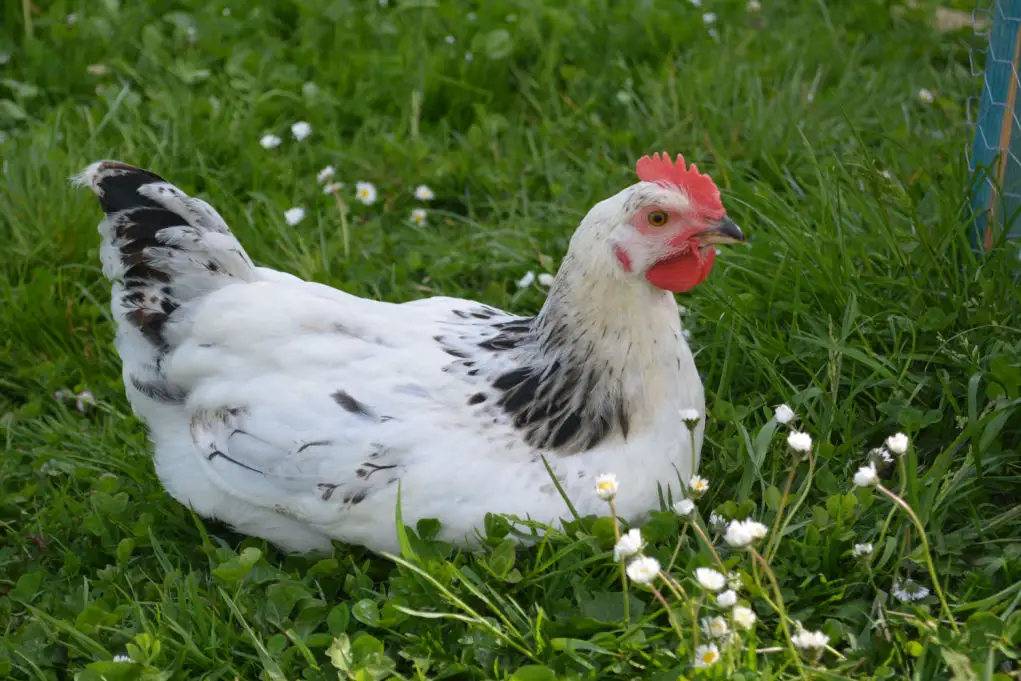
The Sussex is a breed with a unique combination of characteristics. It’s not only calm and gentle, but active and inquisitive. These chooks are happy interacting with people, whether that’s following you around the yard or chatting away when you’re in earshot.
They do well with children too, tolerating handling. And even the roosters are generally friendly chaps.
The hens are good layers, producing 200 to 250 brown or pink-tinted eggs per year. And they’ll continue laying, even in the depths of winter.
They’re happy to incubate their eggs and those of other birds too. And because the Sussex is a large hen, she can handle clutches of up to 20 at a time. When the chicks hatch, they’ll be well cared for by mom.
The Sussex comes in lots of different strains, including speckled, silver, buff, brown and Coronation. The latter was developed to celebrate the coronation of Edward VIII. Coronation Sussexes have white bodies with lavender neck and tail feathers.
Feathered friends
We hope you’ve enjoyed our look at some of the friendliest chicken breeds out there!
The breeds we’ve talked about here are all well known for their gentle and amiable temperaments. But it’s worth remembering that other factors will also play a part in individual chickens’ personalities.
Chickens that have been hand-reared by kind and affectionate humans will be friendlier. And some breeders are known for the pleasant temperaments of their chooks.
But even the friendliest chicken may get annoyed from time to time. Roosters will be feistier than hens, and feistier still during the mating season. And a broody hen will get very upset if you try to remove an egg she wants to hatch.
As with every relationship, kindness, affection, and a bit of give and take will keep things happy and harmonious!

